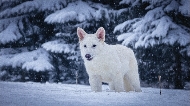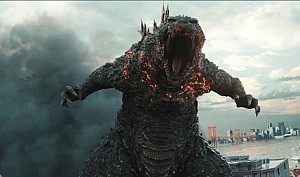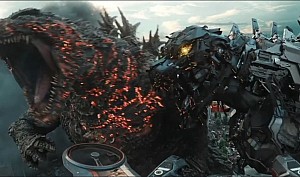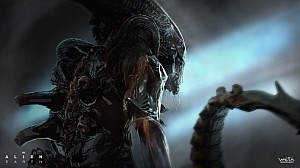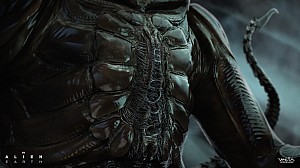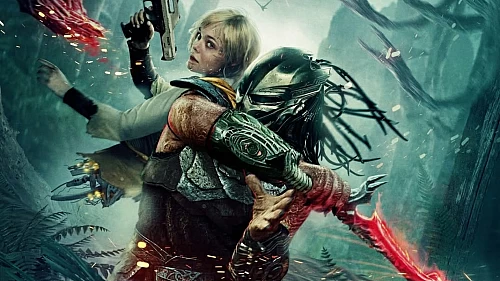This post was published by a guest. The views expressed are those of the author and do not necessarily reflect the views of Scified.com.
The successful de-extinction of the dire wolf represents not just a technological breakthrough but the culmination of years of work by a diverse team of scientists, each bringing specialized expertise to this groundbreaking initiative. Behind Colossal Biosciences' announcement stands a multidisciplinary group of researchers who have pushed the boundaries of genomics, developmental biology, and conservation science.
At the scientific helm of Colossal is Dr. Beth Shapiro, the company's Chief Science Officer and a globally recognized expert in ancient DNA. A professor of Ecology and Evolutionary Biology at UC Santa Cruz and a Howard Hughes Medical Institute Investigator, Dr. Shapiro specializes in extracting and analyzing genetic material from Ice Age specimens. Her pioneering work in paleogenomics laid crucial groundwork for the dire wolf revival.
"Our novel approach to iteratively improve our ancient genome in the absence of a perfect reference sets a new standard for paleogenome reconstruction," explained Dr. Shapiro. "Together with improved approaches to recover ancient DNA, these computational advances allowed us to resolve the evolutionary history of dire wolves and establish the genomic foundation for de-extinction."
Dr. Shapiro's academic credentials include a 2009 MacArthur Fellowship (often called the "genius grant") and election to the National Academy of Sciences. Her expertise in ancient DNA extraction and analysis was instrumental in reconstructing the dire wolf genome from 13,000-year-old and 72,000-year-old specimens.
Working alongside Dr. Shapiro is Dr. George Church, Harvard geneticist and Colossal co-founder. A pioneer in genomics who helped initiate the Human Genome Project, Dr. Church brought decades of experience in synthetic biology and genome engineering to the dire wolf revival effort.
"Preserving, expanding, and testing genetic diversity should be done well before important endangered animal species like the red wolf are lost," noted Dr. Church. "The dire wolf is an early example of this, including the largest number of precise genomic edits in a healthy vertebrate so far—a capability that is growing exponentially."
The business and strategic vision for Colossal comes from Ben Lamm, CEO and co-founder, who has built multiple technology companies prior to launching this de-extinction venture. "I could not be more proud of the team," said Lamm. "This massive milestone is the first of many coming examples demonstrating that our end-to-end de-extinction technology stack works. Our team took DNA from a 13,000 year old tooth and a 72,000 year old skull and made healthy dire wolf puppies."
Ensuring the highest standards of animal welfare is Matt James, Colossal's Chief Animal Officer. With extensive experience in exotic animal care, including senior roles at the Dallas Zoo and Zoo Miami, James oversees the specialized facility where the dire wolves reside. "Colossal's successful de-extinction of the dire wolf represents a massive coup for conservation," James stated. "The technologies developed on the path to the dire wolf are already opening up new opportunities to rescue critically endangered canids."
The ethical dimensions of de-extinction work are guided by Alta Charo, J.D., Colossal's Head of Bioethics and Professor Emerita of Law & Bioethics at the University of Wisconsin. "Whether due to natural or human-induced changes in climate, habitat and food source, the extinction of untold number of species is a loss to our planet's history and biodiversity," Charo explained. "Modern genetics lets us peer into the past, and modern genetic engineering lets us recover what was lost and might yet thrive."
Several prominent scientific advisors have contributed specialized expertise to the dire wolf revival. Dr. Christopher Mason, Professor of Genomics at Weill Cornell Medicine, provided insights on genomic analysis and computational biology. "The same technologies that created the dire wolf can directly help save a variety of other endangered animals as well," Mason noted. "This is an extraordinary technological leap in genetic engineering efforts for both science and conservation."
Dr. Bridgett vonHoldt, Associate Professor at Princeton University and an expert in canid genomics, brought crucial knowledge of wolf genetics to the initiative. Her work with the Gulf Coast Canid Project, studying wild canines with red wolf ancestry along the Gulf Coast, has paralleled and informed Colossal's canid conservation efforts.
Dr. Andrew Pask, Professor at the University of Melbourne and leader of Colossal's thylacine (Tasmanian tiger) de-extinction program, contributed expertise in evolutionary development and comparative genomics. "This project demonstrates the awesome potential for advances in genetic engineering and reproductive technologies to recreate lost diversity," said Dr. Pask. "Apex predators are critical to establishing entire ecosystems and their loss from the landscape can have profound impacts on biodiversity."
The dire wolf team also included numerous laboratory scientists, veterinarians, and animal care specialists who executed the complex technical work required for successful de-extinction. These included experts in CRISPR gene editing, somatic cell nuclear transfer (cloning), embryo transfer, and canid husbandry.
External collaboration expanded the team's capabilities. Dr. Elinor Karlsson of UMass Chan Medical School, who directs vertebrate genomics at the Broad Institute of MIT and Harvard, provided insights on canid genetics and potential health implications of genetic modifications. "By choosing to engineer in variants that have already passed evolution's clinical trial, Colossal is demonstrating their dedication to an ethical approach to de-extinction," Dr. Karlsson observed.
Indigenous knowledge and perspectives were incorporated through collaboration with tribal partners. Mark Fox, Chairman of the MHA Nation, contributed cultural insights about wolves and their ecological significance. "The work of the team at Colossal Biosciences is not only significant to our lands and people, but for conservation efforts across the globe," Chairman Fox noted.
The successful dire wolf revival represents the convergence of multiple scientific disciplines—from ancient DNA extraction and computational genomics to reproductive biology and veterinary medicine. This diverse team brought complementary expertise to overcome the numerous technical challenges involved in bringing back a species extinct for 13,000 years.
As these scientists continue monitoring the development of Romulus, Remus, and Khaleesi, they are simultaneously applying insights from the dire wolf work to other conservation and de-extinction initiatives. The knowledge gained through this groundbreaking achievement is already informing efforts to preserve endangered species like the red wolf and advance Colossal's other de-extinction targets, including the woolly mammoth and thylacine.
Through their collaborative work, these researchers have not only achieved a historic scientific milestone but established a foundation for future innovations in conservation biology and biotechnology.
